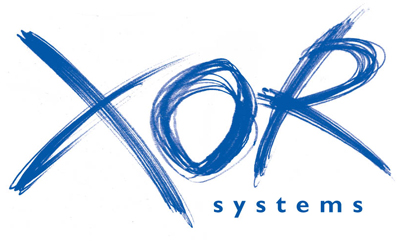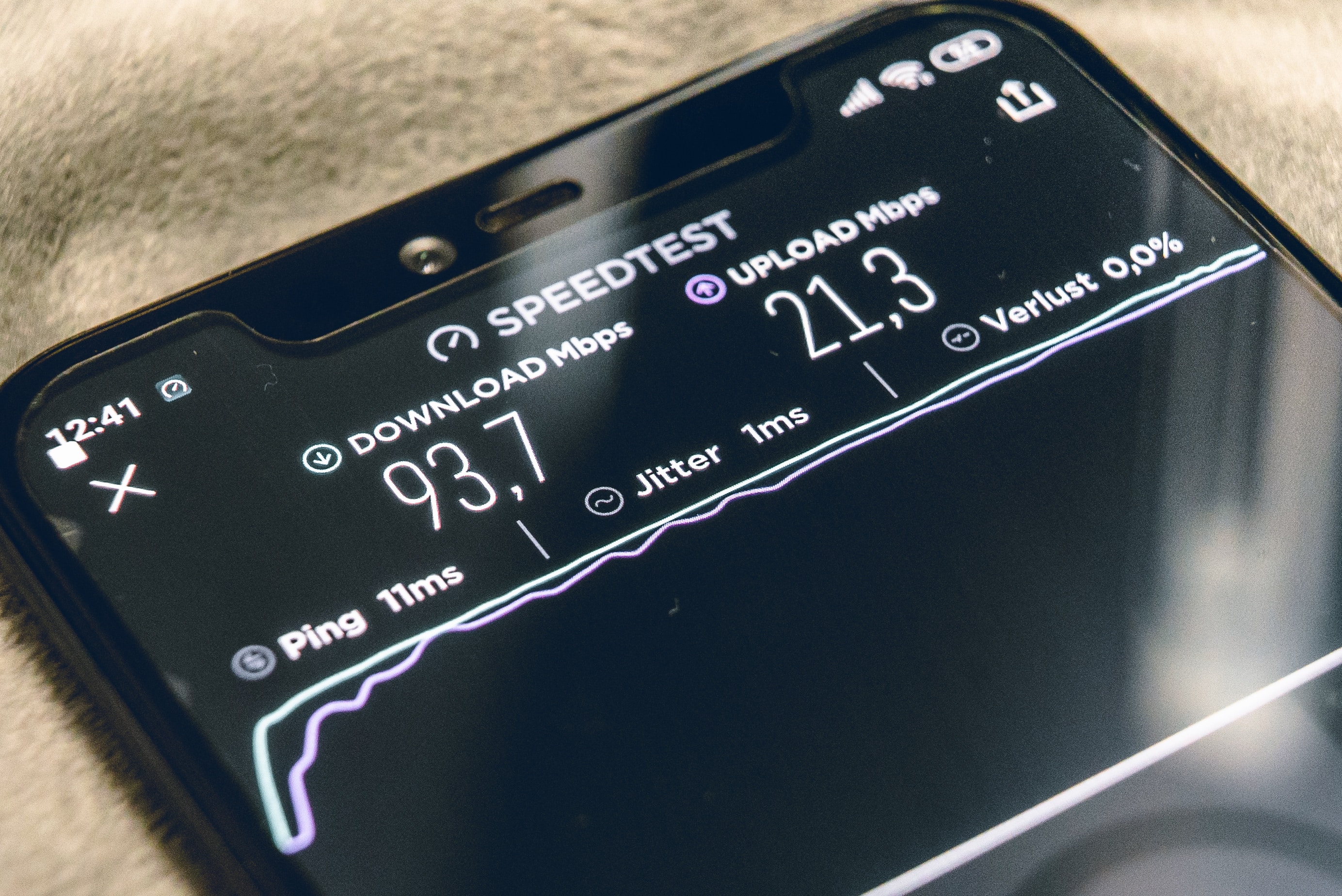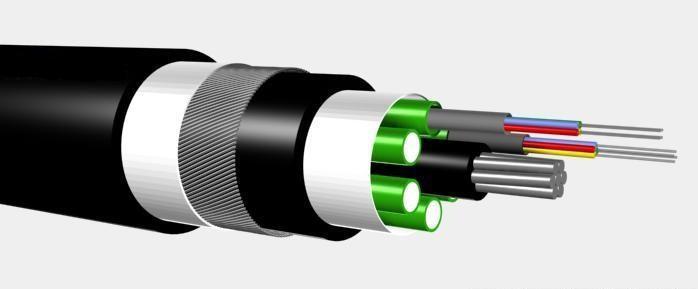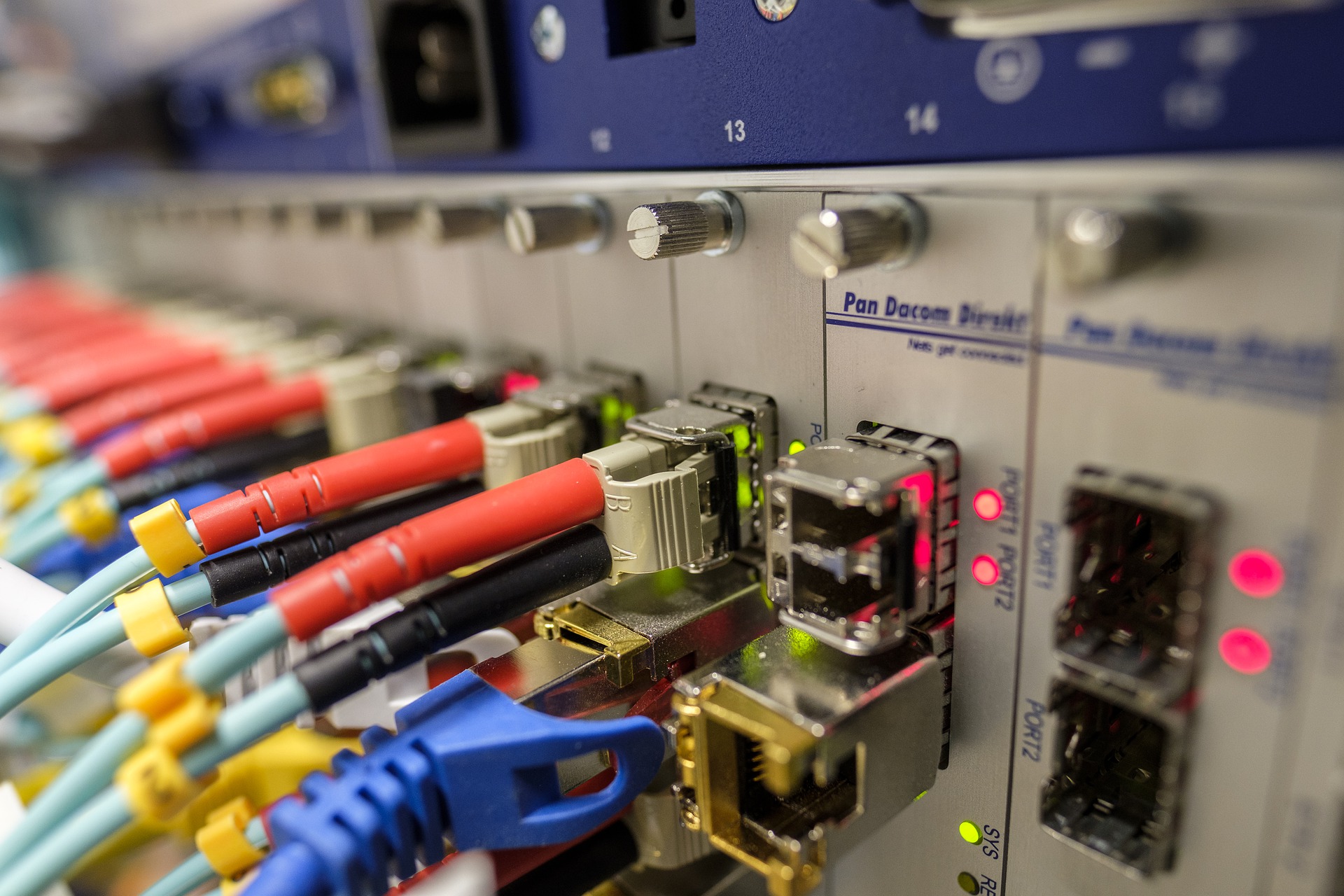5G vs Fibre - Will wireless replace wired?
18-11-2019
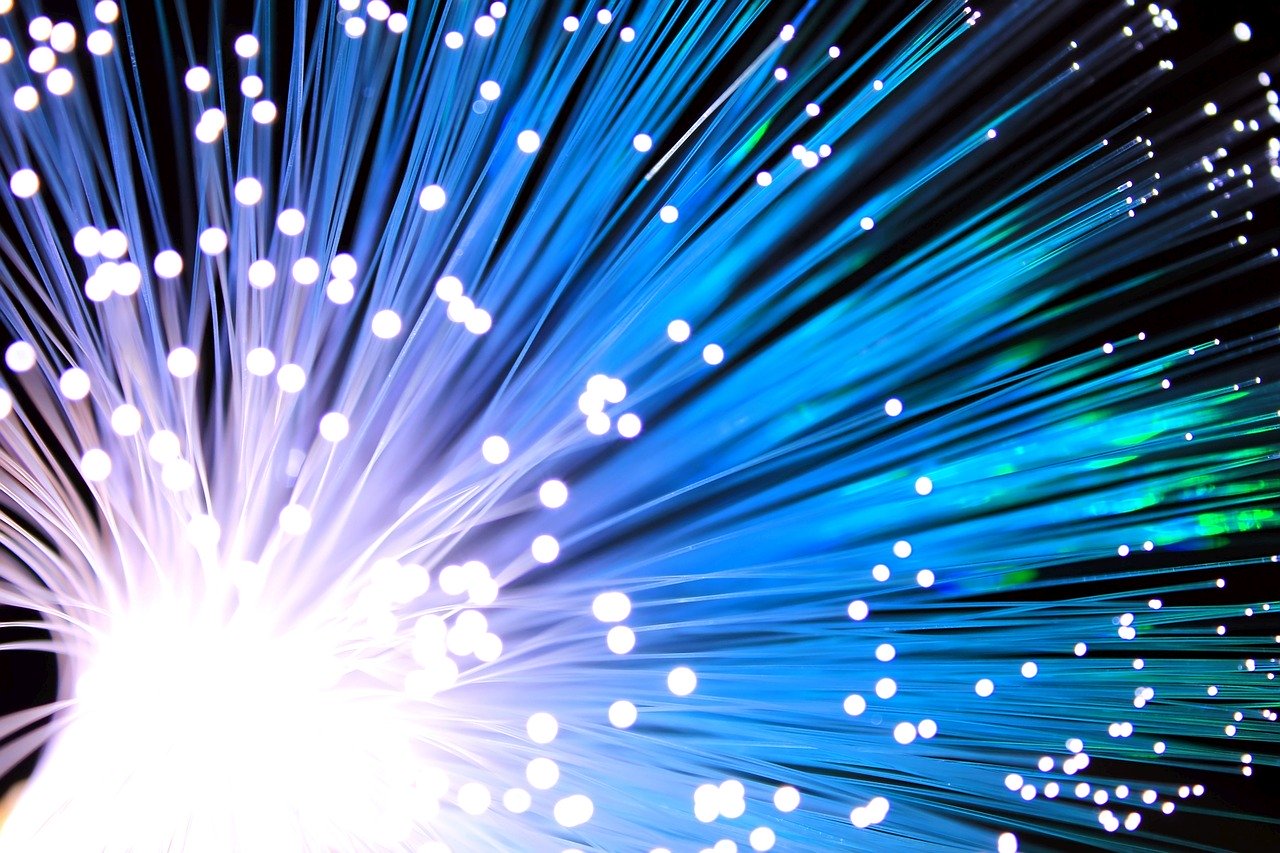
For two decades, the internet has been slowly but surely dominating every aspect of our lives. Speeds have increased, prices have lowered and talks of YouTube buffering have been reduced to tales of myth and legend.
So when the next generation of network infrastructure could be... cellular, why would you want a wired network supplanted by wireless transmission? Because it matches or even exceeds cable broadband.
With a much smaller mast size and low power requirements, they’re able to be placed in far more locations through urban areas, offer comparable bandwidth to full fibre and are able to dynamically and intelligently filter and route types of traffic access into parallel streams to ensure bandwidth isn’t choked and everyone has a fair usage of the network. This all sounds too good to be true. Let’s dig a little deeper.
What is Broadband?
Broadband is a colloquialism for the internet we’re familiar with, but it wasn’t always known this way. To understand how 5G might compete with fibre, let’s look at the process by which data is transmitted, and how. Connection is established by connecting to your Internet Service Provider (ISP) through a Digital Subscriber Line (DSL) connection. The connection remains until the DSL is disconnected or physically unplugged. The DSL creates a broad range of frequencies allowing many layers simultaneously to be transmitted through an existing phone line, thereby creating multiple bands of frequencies. It’s this separation of channels that allows multiple data streams to be sent at once, essential for modern demands of user traffic!
Without this, modern infrastructure would be a far cry from what we experience and take for granted today. Real-time surveillance, ecommerce demands or streaming music would be frustratingly slow and perhaps even impossible.
Copper vs Fibre
There are two primary methods of data travel: copper and fibre. Copper remains the most widely available and used owing to its use in pre-existing telephone lines that were installed throughout the country from 1879, which now total 35 million in the UK by 2002. Because of this, existing lines could be used to carry data into homes and businesses via dial-up with little adaptation. However, this is a severe limitation for a network expecting full fibre speeds.
Fibre witnessed its first major rollout in 2008, promising speeds in the gigabits (with potential speeds in the petabyte range as demonstrated by a Japanese research team in 2010). This is limited only by the speed of light in a vacuum. The round-trip delay time for 1000 km is around 11ms, meaning a signal can be sent around the entire Earth in under half a second, or 440ms. An incredible feat of engineering, and one that is hard to believe we fundamentally rely on and take for granted.
These speeds are under ideal circumstances, of course. The reality is often that fibre transmits from the exchange, then through copper into the home. This bottlenecks the maximum deliverable speed due to losses in transmission mediums i.e current vs light.
Infrastructure in the UK is currently being upgraded to replace the copper with an all fibre network. Fibre to the Premises (FttP) allows optic networks like this to typically run their optical fibre cables all the way to your doorstep and use laser light to deliver significantly faster speeds. With a government pledge to deliver a complete FttP system by 2033 and the total dismantlement of the copper network infrastructure following after, high speed gigabit networks are poised to become the defacto standard for IIoT and internet communications.
What is Wireless?
A wireless network is by and large the same as a physical wired network and resides in the physical layer in the OSI model, but uses radio waves as a transmission medium. Wireless networks have one major advantage over their corporial counterparts: deployment. Provided there is a data line into the router either via cable or sim, they can be placed almost anywhere and allow devices that support wireless connectivity to take advantage. Such an area naturally depends upon geography, location, obstructions, range etc. Speed used to be the limiting factor for an all wireless solution, with the first 802.11-1997’s peak data rate of 2Mb/s, tothe current most popular 802.11-2012 at 1300Mb/s.
BT are currently upgrading fibre with new technology that uses WDM (wavelength-division multiplexing) that uses different colours of laser light to allow multiple bidirectional circuits in a single fibre, allowing for up to 160 channels of 10GB/s-100Gb/s connections. Whilst this sounds like a natural evolution of cabled fibre, this speed is achievable only under ideal conditions as outlined above, in addition to the type of router used and it’s supported speed, the wireless device being able to accept incoming data, and the dataline being fed into the router to provide the connection. These limiting factors make wireless an extension of the wired network, not a replacement. Whilst the majority of homes have wireless routers that are able to connect with almost all devices in 2019, the infrastructure needed to support them in homes and business still relies on cabling to the exchange or to the premises.
What is 5G?
5G is the latest generation of cellular network technology that saw the first mass deployment in South Korea, April 2019. 5G further improves upon 4G by offering speeds of up to 2Gb/s (theoretical speed of 20Gb/s), though the throughput between 4G and 5G approaches the Shannon Limit on data communication speeds.
The Shannon Limit states that “for any given degree of noise contamination of a channel, it is possible to communicate up to a computable maximum rate, with a theoretical maximum information transfer rate of any particular channel”. What this means is that it’s possible to communicate data almost entirely error-free up to the maximum bandwidth of any given channel, despite any given noise or interference level. In essence, it allows for near uninterrupted communication despite interference, provided the correct algorithm for noise cancelling is in place.
Thus, the millimeter wave spectrum (EHF) will be the primary transmission medium for 5G networks. It is widely unused for data communication as opposed to microwave, granted it far higher bandwidth at a shorter range, allowing great usability and propagation for connected devices (1,000,000 million compared to 100,000 on 4G). Millimetre waves (MW) have trouble passing through walls. Each cell has smaller antennas than 4G cells, allowing more cells to be placed around a given area at a lower cost to increase the dispersal rate.
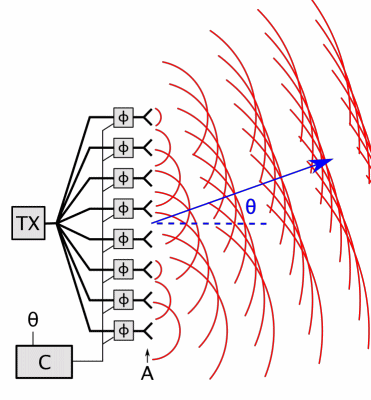
Animation showing how a phased array works.
It consists of an array of antenna elements (A) powered by a transmitter (TX)
Using phased arrays, each cell is capable of having multiple antennas communicating with the wireless device, received by multiple antennas in the device, thus multiple bitstreams to be transmitted in parallel in a similar principle to broadband (DSL). Each base computer that controls multiple cells will continuously calculate the best route for MW to reach each connected device, and will allow multiple antennas to work together. This is the same way phased array radar is able to electronically ‘steer’ radio waves without physically moving the antennae, as to increase signal toward a desired direction, whilst cancelling out any interference generated from undesired directions.
Industrial Internet of Things (IIoT)
The industrial internet of things is a rapidly emerging technology, one that it hopes will facilitate the wide-spread use and adoption of ‘smart cities’ and their components.
Think of smart cities as independent modules forming a collective of a service. The digital parking meter may use cameras to register your car, and by that extension know your personal details (once consent has been given) to bill you for your time parked effortlessly. That then may feed into a database parking map, display a heat map of free parking spaces to other drivers, adjust for congestion and reroute traffic based on the space taken up by cars parked alongside the road.
Relying on stable and faster network connections, these devices or modules can be ideally paired with 5G systems. These then enable the devices to be deployed in a variety of locations without the need for cabled infrastructure to accommodate them. Along with IIoT’s and 5G’s scalable deployment rate, this overcomes the short range of MW and allows some unique advantages of traditional cabled infrastructure:
- Enhanced Mobile Broadband (eMBB)
- Ultra Reliable Low Latency Communications (URLLC)
- Massive Machine Type Communications (mMTC)
URLLC allows uninterrupted data exchange between devices, essential if critical infrastructure is bolstered or relies upon modules that feed it sensor/telemetry data. Working in tandem, mMTC allows for Low Power Wide Area Network (LPWAN) devices. This hive of connectivity allows for long-range communications at a low bit rate, well suited for things. The operating range of LPWAN technology varies from a few kilometers in urban areas to over 10 km in rural settings. Enabling effective data communication in indoor and underground locations, supplanted by transceivers that can run on small, inexpensive batteries for up to 20 years. This then, seems ideal for LPWAN's simplified, lightweight protocols that can reduce complexity in hardware design and lower device costs.
5G vs Fibre
With all the benefits of 5G, it seems that fibre may have met its match, or at the very least would have seen widespread use through the home. Simply put, none of the mobile network generations have tried to take over that requirement or had the infrastructure to do so. 5G is the first network that has truly been able to match fibre in a tête-à-tête, and now may see a divergence and expansion in scope as it becomes not only a real alternative, but a serious contender to wired connections.
Though this is hardly a revolutionary idea. 4G has been supplementary to developing countries and those with poorer communications infrastructure like Italy for a while now. Dongles with prepaid data rates have seen widespread use all over the world, where laying cable would not be financially or even practically possible. For an urban area with existing infrastructure, fixed broadband is much cheaper to run than 5G broadband, determined by factors such electrical usage and maintenance costs.
Where for a rural areas with contested land rights, smaller communities who may petition to block giant infrastructure projects and where development would be remote and more challenging, the 5G option is attractive. Not only would it need one incoming data line, the smaller size of the cells would be less obtrusive to the local people with a more considered approach to natural beauty. Though 5G won’t replace the fibre in the near future, the cost of fibre, and the lowering cost and dramatically improved flexibility make 5G less prohibitively expensive over time.
Network Function Virtualization within 5G infrastructure supported by small cells or full size base stations will not only make per mile of access cheaper, but will also provide for an array of intelligent, adaptive and even application-aware features that create a ‘smart’ telecommunications system for consumers and businesses alike. The caveat however, is that metadata will be scraped and analysed to provide this advantage in real time, which may lead to security concerns particularly with the many layers MW uses to send data in parallel.
It comes down to one thing: context.
Both physical and wireless transmissions have their roles to play in shaping our digital landscape. With the ever increasing popularity and lowering cost of IoT and the reliance and generation of Big Data that is collected by industry from consumers, this traffic needs effective routing to be able to be adequately processed for both city, company and consumer. One of the greatest obstacles to a drop-and-forget IoT device is battery life.
'Things' require power. Li-On is still our primary means of portable power generation, there being no major breakthough in battery power for decades. Software and it's efficiency to sip rather than gulp power are the key players in the fight to conserve battery life. LPWAN-enabled devices can take advantage of the ultra-low power requirements and extend their lifespan considerably further.
A hybrid connection of broadband and 5G is a marriage that BT have announced only recently in this year. Dubbed Halo, it's purpose is to keep a constant connection if the delivery method fails. If wired services are disrupted or bottlenecked, the 5G router acts as backup. Reserved for now as a premium feature, this may become the standard in the near future as 5G becomes more prevalent in our towns and cities, with more ISP’s being able to offer this service.
5G can be considered an enabler of ‘smart’ networks, owing to its phase array proliferation and ability to recognise device and application via metadata collection, allowing ‘smart’ architecture that would enable optimised data delivery, and ultrafast speeds.
In comparing 5G vs Fibre, it's less how they're compete together, and more how they can compliment each other; allowing for persistent connectivity to ensure that no areas of the world are left unplugged.
